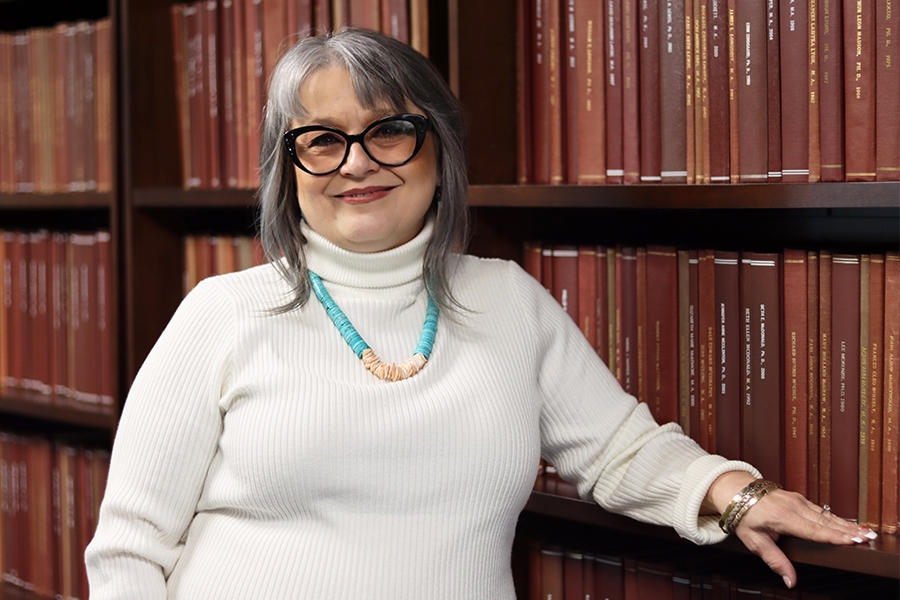Kimberly Wieser, Ph.D., associate professor in the Dodge Family College of Arts and Sciences, will lead a team to digitally curate craft work created by citizens of the Comanche Nation of Oklahoma, made possible by a grant from the Library of Congress.
“When we discovered this grant, we knew we had a dream team that could showcase a project about the Comanche community,” Wieser said. “We learned about Hakaniyutu unu yuhaniyu from Comanche graduate student Krista Hubbard and became fascinated with the phrase, which translates to ‘how are you making right’ in Comanche, because there is a correct way to do and make things in Native culture. That’s how our project, ‘Continuing Comanche Culture: Culture as Making, Craft as Shared Story,’ was developed.”
The OU team, which includes Bill Endres, Ph.D., associate professor in the Dodge Family College of Arts and Sciences, Rance Weryackwe, assistant teaching professor and member of the Comanche Nation and Allison Steinmeyer, doctoral student and member of the Comanche Nation, will conduct interviews with participants to understand the methodologies of their culturally-grounded productions. The interviews will also explore how different materials and aspects of the crafts celebrate, appropriate and transcend different power dynamics, identities, communities and culture. Finally, the interviews will provide insight into how a piece of craft work is made and how its materials tell a human story.
High-resolution and 3-D images will be photographed, and reflectance transformation imaging, called RTI, will be used to capture surface details and the play of light. RTI is an imaging technique that creates hyper-realistic digital replicas of a subject’s surface shape and color and enables the interactive re-lighting of the subject from any direction.
“A lot of times, the work on a Native-made object is very intricate, so seeing the details might be very difficult. For these kinds of objects, RTI will allow people to appreciate the level of detailed craftsmanship of the artwork,” Wieser said.
The Library of Congress will catalogue the results of this project into their American Folklife Center’s permanent collection. Within Oklahoma, two computer kiosks will house the digital interviews alongside their images. One kiosk will be donated to the Native Nations Center at the University of Oklahoma and the other to the Comanche Nation Museum in Lawton, OK.
“We want people to see that these Native traditions are alive, growing and vibrant,” Wieser said. “We also want the work of these craftspeople to be in the Library of Congress for future researchers to use and appreciate. Everyone benefits when this Native craft work is accessible by the community.”


